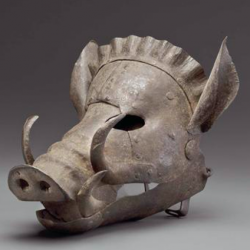Rachel Mihlstin
In movies and pop culture, superheroes are often wearing the mask, but the fictional public has faith that the masked hero is there to protect them. However, in the real world, the public does not like anonymous figures. Masks are mostly known for covering up one’s face so that they can commit a crime, in other words, it is not a positive thing. Marks are often dark and mysterious even if they do no harm. On the contrary, some people who are activists that wear masks. When looking at several different activists and activist groups that wear masks, the main purposes of covering their faces are protecting their identity, making a statement with the mask and unification. For example, the digital hacker group Anonymous are represented by the Guy Fawkes mask and that specific mask has become a symbol of activism. Other modern examples can be seen in feminist movements around the world such as the Guerilla Girls, known for wearing masks that match their name’s sake and Pussy Riots who sport balaclava masks. The last example of masks used by activist groups is the Zapatistas who stand for the face and voices of the unknown indigenous people of Mexico. Masks are used by activists for three main purposes by groups to further push their agenda despite the contrary association of anonymity with wearing a mask.
Guy Fawkes was an Englishmen who played a major role in the Gunpowder plot, an attempt to blow up the Westminster Palace in 1605. Fawkes was recruited to help pull off the attack by Robert Catesby and his band of men. Fawkes was caught before the explosion went off and Fawkes was tortured to give the names of his conspirators (Guy Fawkes). British graphic designer, David Lloyd, accentuated and stylized Guy Fawkes’ facial features to create the mask worn by the protagonist in the comic-turned movie V for Vendetta. The film concludes with a large crowd, unanimously donning the Fawkes mask. Since then, the mask has been used widely used to cloak the identity of protestors. Some of the larger protests include when the mask was worn by the masses was at a protest against Scientology and the Occupy Wall Street protest in New York (Waites).
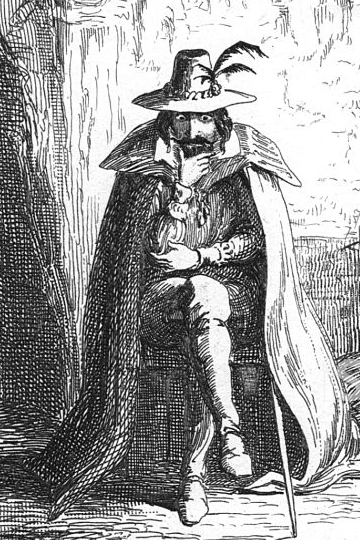
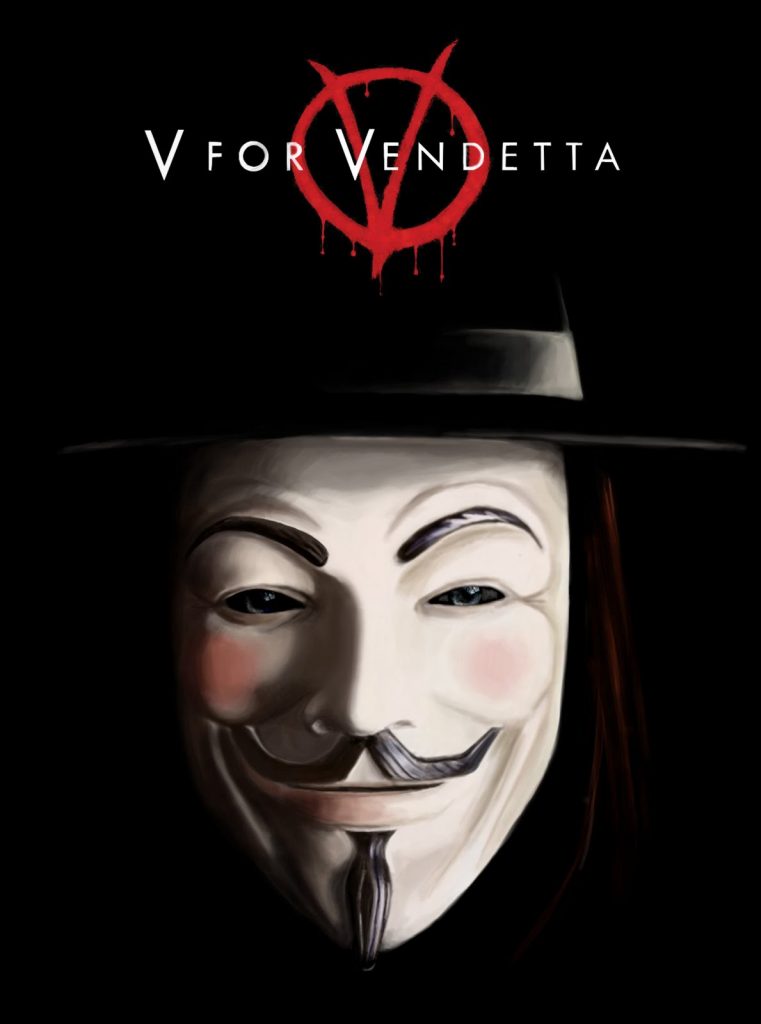
Another use of the Guy Fawkes mask is to symbolize the “hacktivist” group, Anonymous. The global group is decentralized but made up of hackers to cause digital distress to those who have abused their power. For example, after the murder of George Floyd, the group is credited with flooding the Minneapolis Police Department’s website and database, rendering it unusable (Tidy, Molloy). They have done similar actions like denouncing the Ku Klux Klan and releasing personal information about members. Another example of their work is hacking the Church of Scientology’s website. Since Anonymous, not a physical group, they only have a general goal and that is to emphasize freedom of speech, fight censorship, and other forms of government control. The summer of 2020 saw the group’s most recent activity starting with the murder of George Floyd and then some activity threatening Donald Trump (ABC NEWS). The anonymity of the group and its purpose of activism is an example of how lack of identity can lead to an amplified voice demanding justice as the mask not only allows those to voice their opinion but also unify as a mass.

The artist, Banksy, is another example of how anonymity plays into activism as his identity is unknown while his art brings about controversial topics. He is a graffiti artist, an art form associated with delinquency, known for creating satirical art commenting on social and political issues. Graffiti art is also often associated with anonymity because the artists often cover their faces with a face mask to prevent them from inhaling the paint fumes and aerosol. Graffiti can be seen as one of the more popular art mediums that is used for activism. In 2010, Time Magazine included Banksy as one of the top 100 most influential people (Ellsworth-Jones) Banksy’s persona combines the mystery and fear around anonymity with the idea of a hero, as people are not afraid of his work, they look forward to finding it on the streets of England. People appreciate his work as it often challenged corrupt institutions. His growing success has amplified the voices of the people and their frustrations.
Banksy may be hiding his identity to protect himself from facing vandalism charges or from the public eye, but his anonymity is also hurting his art simultaneously. Part of the Banksy ideology is against consumerism and capitalism, so it is rare for him to sell his art and merchandise with his work on it. His art can be found on alleys and building walls in England. However, his popularity has led to many others selling merchandise with his work on it. Banksy has taken legal action by suing those attempting to make a profit but in a turn of events, lost. The court ruled that due to his lack of identity the right of his work “are much harder to meet when they concern modern and contemporary anonymous works of art for which sufficient information that might be used to ascribe to them a chronological, cultural, or institutional context is lacking.” (Banksy Trademark) Essentially, there is not enough information known about Banksy to complete his formal, government identity.
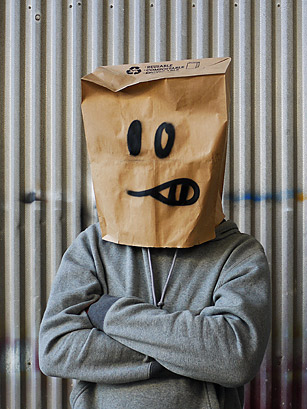
Despite Banksy losing this case, I believe there is room for Banksy to start a new activism campaign. He could make art about the idea of identity and once again challenge the institution, in this case, copyright laws, for attempting to discriminate by conforming identity to formal and privileged aspects, such as address or background. Immigrants, homeless people, or refugees might not have all the necessary information the government requires but is that what will stop them from receiving copyright protection? There is more to one’s identity than those formal aspects. People without those formal details may feel ashamed or threatened that they do not have those credentials. Those formalities also address major societal issues like homelessness, poverty, and discrimination. Banksy is a big enough artist to make a statement like this and claiming that his lack of identity prevents him from copyright protection seems possible to change in the future.
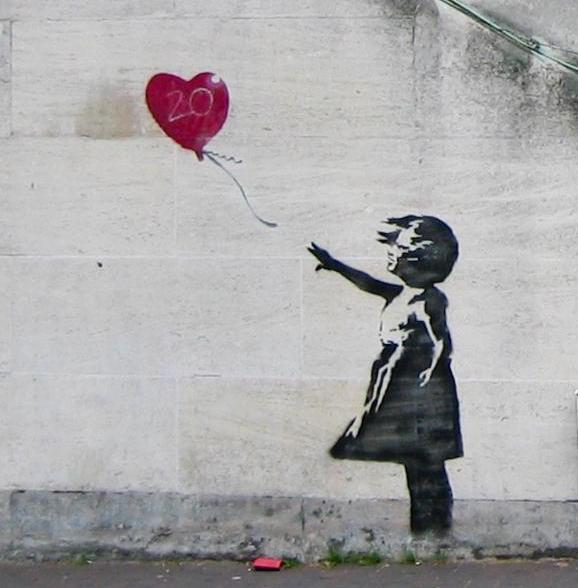
Another example of an activist group using masks to protect their identity while unifying and making a socio-political statement is the Zapatistas. The group protests the inclusion of Mexico in the North American Free Trade Agreement, the NAFTA. The Zapatista Army of National Liberation is more generally against capitalism and democracy as they feel countries like the United States have their government and economy too closely intertwined without acknowledging it. The United States preaches and tries to spread the free market and total freedom ideology but in fact, the government is heavily involved in the regulation of the economy. The indigenous people of Mexico have been greatly affected by these regulations like NAFTA. The Zapatista Army and protestors wear masks to protect their identity but also represent the “ones without faces” or their indigenous ancestors as they were treated as insignificant to global powers like the United States. There were major student protests after the signing of NAFTA in 1994. Zapatista soldiers occupied 7 Mexican cities. Both parties wore balaclavas or red kerchiefs to be noticed as they felt their facial features caused them to be unnoticed (Wearing a Mask).
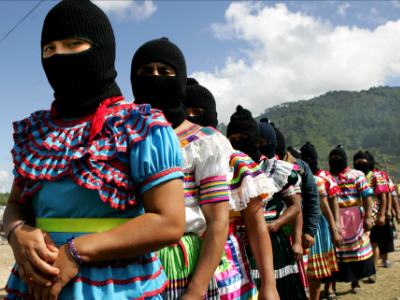
Feminist groups have also used masks to protect their identity while making their statement. The Guerilla Girls formed in 1985 to protest the lack of representation of female artists in the art world, specifically their representation in museums and galleries as well as international recognition in institutional honors (OUR STORY). The group covers their faces with gorilla masks and uses them to symbolize the group. However, they say the main reason they wear the mask is to keep the focus on the issues they are bringing awareness to (Tate). This is a common theme with all the activist groups mentioned so far, they are not only protecting their livelihood from threats but by not having a specific identity attached to their cause, the cause is accentuated.
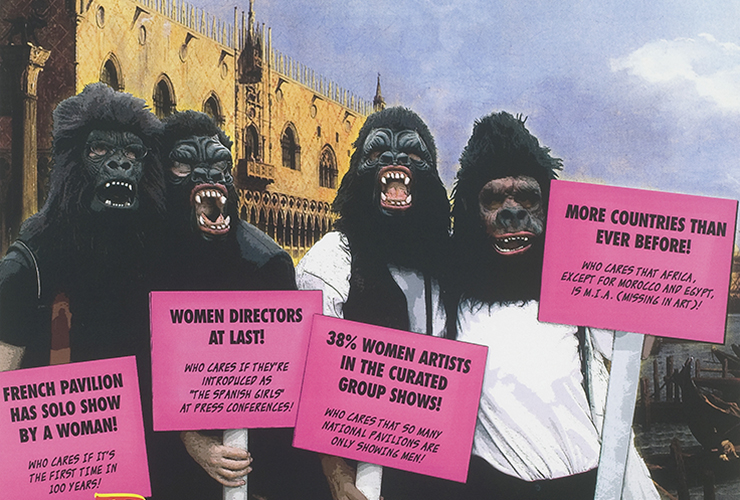
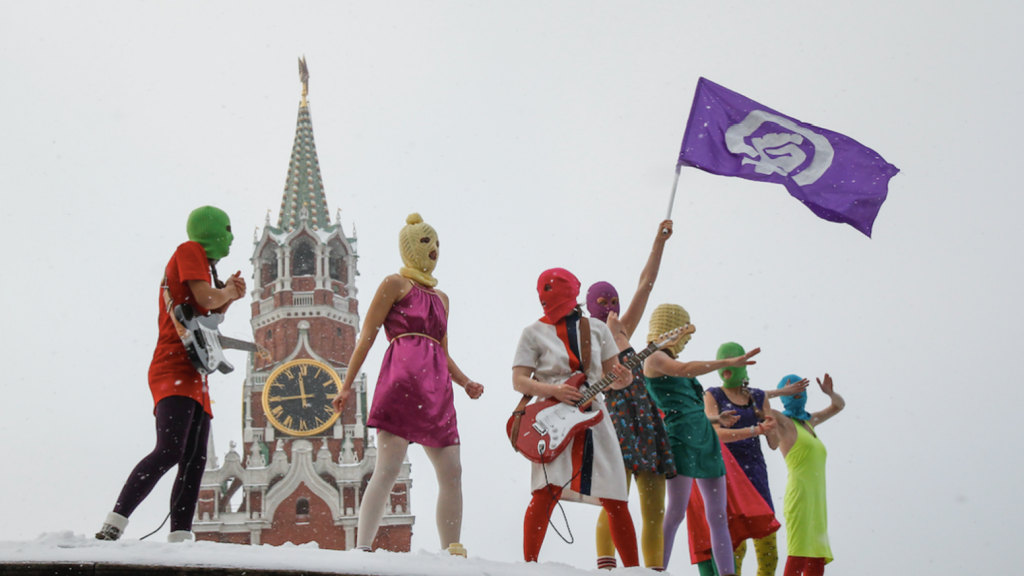
Another feminist example of an activist using masks is Pussy Riot, the Russian punk group that demands separation of church and state. They noticed the Russian Orthodox Church carries an anti-woman and anti-LGBT attitude in their practices (Myzelev 2). Free speech is suppressed and there are unusually cruel punishments for women like labor camps. The idea of free speech is considered modern and western while Russia tries to hold on to a traditional way of life. The most notable protest by Pussy Riot was the group performing their punk songs on the stage of the highest Orthodox church in Moscow. They wear brightly colored dresses and tights but also wear bright balaclavas to appear feminine but also rebellious. They were only tried of hooliganism which is an example of Russia not acknowledging women as equal to men, Pussy Riot has a serious message that directly criticizes the two largest institutions of Russia and their trial was not treated as such (7). The use of masks is once again used to protect the identity of those in the group but also to have a rebellious appearance to match their seemingly rebellious agenda.
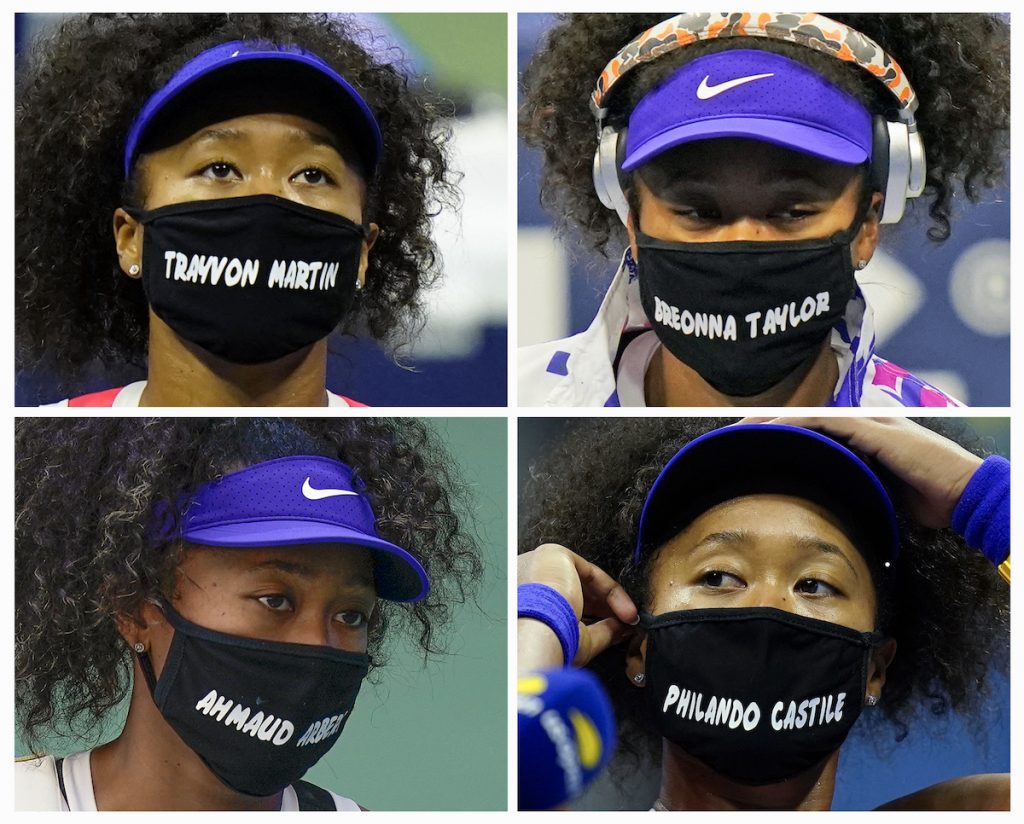
Even in today’s catastrophic event, the COVID-19 pandemic, most of the peoples’ faces are covered in a protective shield to slow the spread of the virus. People have taken the liberty of expressing their political and social views on the cloth mask, for example having a Black Lives Matter mask or a gender equality symbol. These masks have been worn on people often covered by the media: athletes, politicians, and celebrities along with the public (Masked Not Muzzled). This is another example of the use of masks playing a role in activism. While people’s mouths may be covered, they are still expressing their views and making their voices known. I believe expressing their views in such a forward way will encourage others to think about their views. Also, constantly seeing a message on people’s faces, one of the most notable features of a person, will spread awareness quicker and let people know that others have a concern that they want to be shared.
The relationship between masks and activism has not been entirely for the same purpose but there is a thread between the two. Anonymity helps assist people to express their views without fear of repercussions. Most people assume that someone wearing a mask has bad intentions but often, as we have seen with Banksy and the Guy Fawkes masks, people are just trying to spread awareness of an issue or criticize corrupt institutions. The mask can also protect minority groups like the Zapatistas, Guerilla Girls and Pussy Riot so that they can be noticed by the institutions that overlook them. They have endless possibilities as we have seen with the Banksy court case and the new use of medical masks to spread awareness of current socio-political issues. In all cases, the masks can unify groups representing a collective identity to emphasize their respective cause.
Works Cited
ABC News, ABC News Network, abcnews.go.com/US/worldwide-hacker-group-anonymous/story?id=37761302.
“Banksy Trademark ‘at Risk’ after Street Artist Loses Legal Battle.” The Guardian, Guardian News and Media, 17 Sept. 2020, www.theguardian.com/artanddesign/2020/sep/17/banksy-trademark-risk-street-artist-loses-legal-battle-flower-thrower-graffiti#:~:text=The%20European%20Union%20Intellectual%20Property,because%20his%20identity%20remained%20hidden.
Ellsworth-Jones, Will. “The Story Behind Banksy.” Smithsonian.com, Smithsonian Institution, 1 Feb. 2013, www.smithsonianmag.com/arts-culture/the-story-behind-banksy-4310304/.
“Guy Fawkes.” Encyclopædia Britannica, Encyclopædia Britannica, Inc., www.britannica.com/biography/Guy-Fawkes.
“Masked Not Muzzled – the Art of the Political Mask.” The Guardian, Guardian News and Media, 15 July 2020, www.theguardian.com/world/gallery/2020/jul/15/masked-not-muzzled-the-art-of-the-political-mask.
Myzelev, Alla. “Pussy Riot: Representing Russian Activism between East and West .” Comparative Media Arts Journal, 2021.
“OUR STORY.” Guerrilla Girls, www.guerrillagirls.com/about.
Tate. “Guerrilla Girls.” Tate, 1 Jan. 1989, www.tate.org.uk/art/artists/guerrilla-girls-6858.
Tidy, David Molloy & Joe. “George Floyd: Anonymous Hackers Re-Emerge amid US Unrest.” BBC News, BBC, 1 June 2020, www.bbc.com/news/technology-52879000.
Waites, Rosie. “V For Vendetta Masks: Who’s behind Them?” BBC News, BBC, 20 Oct. 2011, www.bbc.com/news/magazine-15359735.
“Wearing a Mask Is a Way the Zapatistas Invite Everyone into the Struggle.” Netpol, 11 Nov. 2015, netpol.org/2015/11/02/ezln-masks/.
